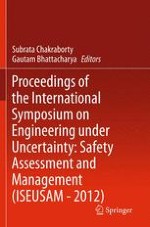2013 | OriginalPaper | Chapter
Seismic Reliability Analysis of Base-Isolated Buildings
Authors : M. C. Jacob, G. R. Dodagoudar, V. A. Matsagar
Published in: Proceedings of the International Symposium on Engineering under Uncertainty: Safety Assessment and Management (ISEUSAM - 2012)
Publisher: Springer India
Activate our intelligent search to find suitable subject content or patents.
Select sections of text to find matching patents with Artificial Intelligence. powered by
Select sections of text to find additional relevant content using AI-assisted search. powered by
